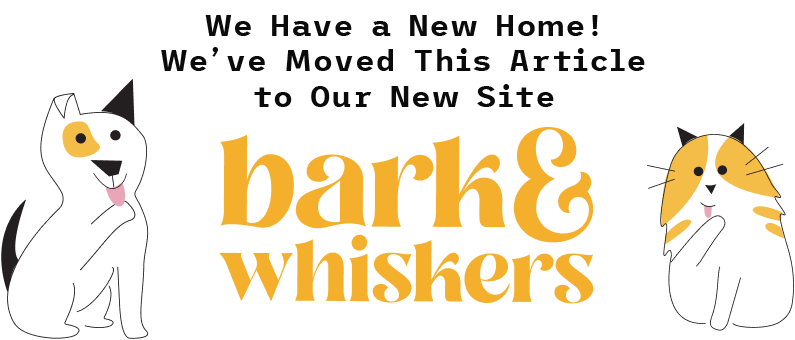The Behavior You Don't Want To Discourage, No Matter How Bad It Gets

10.03 BW Nonlead
https://www.barkandwhiskers.com/2016-06-06-nl-dog-growling/
https://www.barkandwhiskers.com/p/d7168afc-1b96-43a9-9c00-b5a36fb8ee15/
By Dr. Becker
When your dog growls, your first reaction may be to try and stop it. You may even yell at your dog or punish him for growling at you. This may stop the growl, but unfortunately may lead to greater problems in the future.
Why? Because when your dog growls, he's trying to tell you something — usually that he's uncomfortable or afraid. Growling is not only acceptable; it's a desirable form of communication. Your dog is giving you a warning to back off or to tell you that he needs to be removed from the situation.
If punished enough times for growling, your dog will learn not to growl and then may not give any indication when situations are stressing him out. The end result may be that he suddenly bites someone without warning because, after all, he's been taught not to give one.
Why You Shouldn't Punish Your Dog for Growling
It's a bad idea to punish your dog for growling, and here's why:1
- The punishment may suppress the growl but it will not change your dog's emotional state. Your dog will still be fearful or uncomfortable and the emotions could easily progress into aggression.
- Punishing an already fearful dog will only heighten the tension he's feeling and may promote aggressive and fear-based behaviors.
- Punishing your dog for communicating with you via a growl will hinder communication between you and your dog.
- The punishment may damage your relationship with your dog, as he may stop trusting you or associate you with unpredictable, and sometimes scary, reactions.
In short, while you probably don't want your dog to growl at you, punishing this normal form of communication will only backfire. The punishment will likely make your dog more fearful and potentially more aggressive.
It will also decrease the likelihood that he'll growl the next time something makes him uncomfortable, which means you'll lose out on this valuable form of canine-human communication.
If your dog stops growling, you may not receive a warning before he's pushed past his limit and potentially acts out aggressively.
What to Do When Your Dog Growls
If punishment isn't an option, what should you do when your dog growls? Here's a step-by-step guide:2
Stop What You're Doing
If you know your dog may bite soon after a growl, immediately stop, back away and get to a safe place (you should also move away from any unfamiliar dog that's growling).
If you know your dog may growl but is unlikely to bite, stop what you're doing but stay where you are.
When your dog relaxes, then move away (which rewards your dog for relaxing, not for growling). If necessary (and you know you can do so without a risk of being bitten), remove the dog from the situation.
Figure Out Why Your Dog Growled
What caused your dog to feel uncomfortable or fearful? Were you trying to cut his nails? Taking his food away? Trying to get him to go outside (or come inside)? It's important to know what situation caused your dog's response.
Create a Plan to Make the Situation Less Stressful for Your Dog
You may need to get creative here or even seek the help of a professional positive reinforcement trainer. For instance, if your dog growls when you try to groom him, distract him with treats while someone else does the grooming.
You can also try to redirect your dog by offering a more positive experience, such as playtime, or direct your dog to go to his bed, and then reward the behavior.
Try to Eliminate Stressors to Your Dog
Dogs get stressed out too and, just like in people, the stress can add up. If you've had houseguests, for instance, a dog that's used to a quiet household may be on edge.
If you then take him to the groomer or a storm occurs (and he's afraid of thunder), he's likely to be even anxious than normal. This is the perfect storm to elicit a growl from your dog, even in a situation where he ordinarily may be calm.
Overall, the more you can reduce stressors from your dog's world, the better, and for cases where the stress cannot be eliminated, at least be sure your dog has a safe, calm place to retreat to (such as a cozy crate).
To Address Growling, Address Why Your Dog Is in Fear
Growling is a symptom of larger issue; a sign that your dog is afraid and unable to tolerate a given situation. There's no need to punish the "symptom" of growling, as it's simply your dog's way of telling you that something's wrong. Instead, figure out what's making your dog uncomfortable and then come up with a plan to address it.
In cases where the fear-triggering scenario cannot be changed (such as taking your dog to the veterinarian or cutting his nails), use techniques such as distraction to diffuse the tension. As mentioned, you can also seek the help of a behaviorist or other trainer to help your dog become less fearful.
One final thought — growling among puppies or dogs that are playing is typically perfectly normal and does not need any intervention at all. As long as your dog is showing no other signs of aggression, you can assume that occasional growling during play or tug is all in good fun.
Related Articles:
 5 Simple Steps to Positive Reinforcement Dog Training
5 Simple Steps to Positive Reinforcement Dog Training Are You Making This Mistake When Your Pet Misbehaves?
Are You Making This Mistake When Your Pet Misbehaves?

